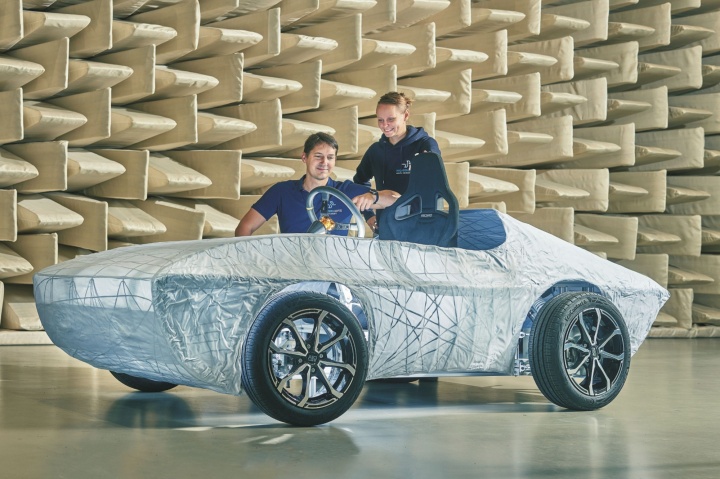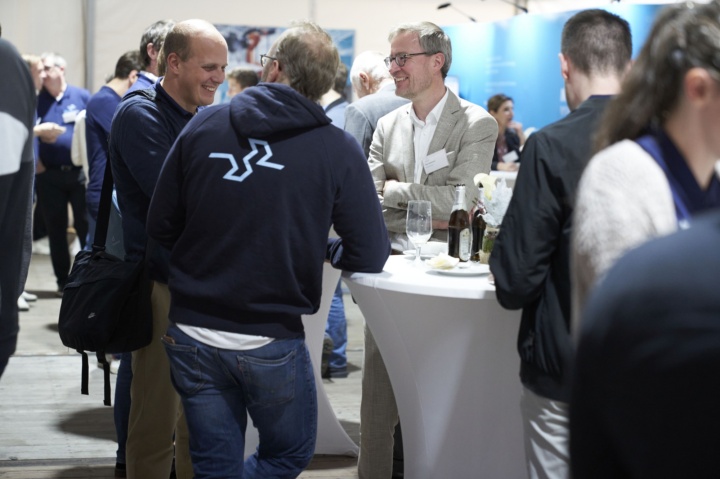Remaining mobile and producing without overtaxing the earth’s natural regenerative capacity: That’s the aim of the Innovation Campus “Mobility of the Future” (ICM) at the Karlsruhe Institute of Technology (KIT) and the University of Stuttgart. Here, in about 60 research projects and 40 research institutes, almost 300 scientists are working on electric motors without rare earths, novel manufacturing technologies, and self-learning software systems for vehicles. The ICM is one of the largest initiatives for the mobility and production of the future in Germany. First solutions developed at the ICM show that economic success and ecological responsibility are by no means mutually exclusive, but can even complement each other. On October 12, 2022, some of them were presented at the “Future Mobility Open Labs” at KIT.
“Baden-Württemberg is helping to shape the transformation to sustainable and resource-efficient mobility: By combining the expertise of the two research universities KIT and the University of Stuttgart in the Innovation Campus Mobility of the Future, we are creating an attractive research environment. At the ICM, brilliant minds are working together in order to provide the foundations for tomorrow’s mobility and production technologies through excellent interdisciplinary research,” says the Minister of Science, Petra Olschowski. “The Innovation Campus Mobility of the Future is a beacon of research, where building blocks for a climate-neutral future are being developed.”
Material-saving and low-wear electric motors
“Without technology, we cannot create a sustainable and livable world. The purpose of the research at the ICM is to lay the foundations for this. It’s also the core of its mission,” says Professor Albert Albers, Spokesperson and Head of the Institute of Product Engineering (IPEK) at KIT. Prototypes of novel electric motors already exist: “Reluctance motors do not require permanent magnets and rare earths, which makes them very sustainable and resource-saving,” says Professor Nejila Parspour, Director of the Institute of Electrical Energy Conversion (IEW) at the University of Stuttgart. “However, this machine is not yet used in vehicles today because of its low power output. The ICM is therefore developing motors that have a higher rotational speed.” Another field of research: electrically excited motors. Unlike permanently excited rare-earth motors, which are used in almost every vehicle, these motors promise higher efficiencies at medium to high speeds, which means a greater range for battery-powered vehicles. For now, these machines are still susceptible to wear. Energy is transmitted to the rotor shaft via slip rings, which wear out considerably. Scientists at the ICM are working on a wear-free inductive energy transmission that will be able to make this type of motor suitable for serial production for the majority of vehicles on the market.
Self-learning vehicles
According to Professor Eric Sax from the Institute for Technology in Information Processing at KIT, the electrical and electronic systems in vehicles are becoming increasingly complex. “For efficient and safe mobility, all information and components must interact optimally. The appropriate information technology is key for this.” Software that optimizes itself while the vehicle is driving and then makes acquired knowledge available to other vehicle fleets via an air interface. There are prototypes running in fleets of self-learning buses, and a first series could be produced in 2025.
Production must be able to adapt to changing requirements on an ongoing basis
When the demands on products change, production must change: “Hardly any other industry is facing such far-reaching changes as the mobility sector,” says Junior Professor Andreas Wortmann from the Institute for Control Engineering of Machine Tools and Manufacturing Units at the University of Stuttgart. Production lines, machines, and processes in the automotive and supply industries must therefore be flexible, and software should be able to adapt automatically. On top of that, the production process itself has great potential for reducing emissions. “So we’re going to need flexible and universally applicable manufacturing systems as well as fast and automatic software adaptation,” says Professor Gisela Lanza from the Institute of Production Science at KIT. The goal: the universal machine. “We are working on integrating all laser-based manufacturing processes,” says Professor Thomas Graf, Director at the Institute of Laser Technologies at the University of Stuttgart. 3D printing, welding, cutting, drilling, coating, and hardening on a single system – like a “Swiss Army knife” for manufacturing, so to speak – allows location-independent, highly efficient production without warehousing and logistics chains. (Text: KIT, mex)
Expert Contact:
Dr. Max Hoßfeld, University of Stuttgart, Innovation Campus Mobility of the Future, phone +49 711 685 60947, E-Mail




